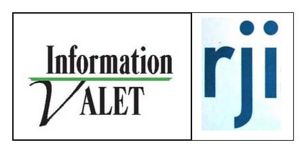Difference between revisions of "Blueprint"
(→The bottom line: Is this of interest?) |
|||
| (19 intermediate revisions by the same user not shown) | |||
| Line 1: | Line 1: | ||
| − | |||
[[Image:Ivp-rji-logo.jpg|thumb|300px|left|[[http://informationvalet.wordpress.com The Information Valet Project]]]] | [[Image:Ivp-rji-logo.jpg|thumb|300px|left|[[http://informationvalet.wordpress.com The Information Valet Project]]]] | ||
[[Image:Blueprint-photos.jpg|thumb|800px|right|[http://flickr.com/photos/33134655@N06/sets/72157610817325064/ View all photos by Josh Rowan]]] | [[Image:Blueprint-photos.jpg|thumb|800px|right|[http://flickr.com/photos/33134655@N06/sets/72157610817325064/ View all photos by Josh Rowan]]] | ||
| − | = | + | =<b>Blueprinting the Information Valet Economy</b>= |
| − | + | <h2> | |
| + | *NEW: [http://www.newshare.com/wiki/index.php/Infotrust-blueprint2 Blueprint Update: June 23-25, 2010 event at RJI] | ||
| + | </h2> | ||
| + | [http://www.newshare.com/wiki/index.php/Blueprint-links OTHER LINKS/COMMENT] . . . [http://www.mediagiraffe.org/valet.pdf ABOUT THE NEW(S)SOCIAL NETWORK] . . . [http://www.informationvalet.org INFORMATION VALET PROJECT BLOG] . . . . [http://feeds.feedburner.com/infovalet RSS FEED]<HR> | ||
| + | |||
[[Image:Rji-ideas.jpg|thumb|150px|right|[http://rji.missouri.edu/image-library/stories/new-building/index.php RJI PICTURED]]] | [[Image:Rji-ideas.jpg|thumb|150px|right|[http://rji.missouri.edu/image-library/stories/new-building/index.php RJI PICTURED]]] | ||
| + | [[Image:Ivp-conference-room.jpg|150px|thumb|right|Break-out rooms]] | ||
[[Image:Rji-working.jpg|thumb|150px|right|[http://rji.missouri.edu/vision-and-mission/index.php THE RJI VISION]]] | [[Image:Rji-working.jpg|thumb|150px|right|[http://rji.missouri.edu/vision-and-mission/index.php THE RJI VISION]]] | ||
| − | + | [[Image:Ivp-forum.jpg|150px|thumb|left|Forum-style discussion]] | |
| − | + | [[Image:Ivp-library.jpg|150px|thumb|left|Small-group collaboration]] | |
| − | + | ===Building a collaborative, shared-user network<br><br>A wrapup of the December 3-5, 2008 summit at the<br>Donald W. Reynolds Journalism Institute<br>Columbia, Missouri=== | |
| − | + | <H4>PRIVACY . . . ADVERTISING . . . COMMERCE . . . PERSONALIZATION</H4> | |
| − | < | + | <b>More than 50 editors, writers, technologists, publishers, entrepreneurs, academics, researchers and students gathered Dec. 3-5, 2008 at the [http://tinyurl.com/6zkzr4 Donald W. Reynolds Journalism Institute] at the Missouri School of Journalism. Their [http://www.newshare.com/ivp-flyer.pdf pre-arranged mission:] invent a new way to sustain the role of journalism in participatory democracy. Their approach: Create a shared-user web network for demographic privacy management, advertising and information commerce. ''(What's that? See "Where we're starting," below.)''<br> |
| − | + | <hr><H4> | |
| − | + | *[http://newshare.com/wiki/index.php/Blueprint-links KEY PARTICIPATION LINKS (and what others are saying)] . . . . [http://www.newshare.com/wiki/index.php/Blueprint-video WATCH VIDEO ARCHIVES]</H4> | |
| − | + | <HR> | |
| − | + | They shared ideas and advised RJI fellows on how to start the <i>Information Valet Economy,</i> where companies compete to provide personalized service to users, and make money referring their users to content -- and advertising -- from anywhere. The service might coordinate next-generation advertising placement and compensation, consumer-centric demographic management (and privacy) and multi-site commerce -- all designed to sustain journalism and providing new value to traditional print news subscribers.<br><br> | |
| − | < | ||
| − | |||
| − | < | ||
| − | |||
| − | |||
| − | |||
| − | |||
| − | |||
| − | |||
| − | |||
| − | * | ||
| − | |||
| − | |||
| − | |||
| − | |||
| − | |||
| − | |||
| − | |||
| − | |||
| − | |||
| − | |||
| − | |||
| − | |||
| − | |||
| − | |||
| − | |||
| − | |||
| − | |||
| − | |||
| − | |||
| − | |||
| − | |||
| − | + | Follow the links below to learn who participated, where we started, what we discussed, and what happens next. Join or [http://groups.google.com/group/infovalet read the InfoValet interest group,] or send an email to [mailto:infovalet@gmail.com infovalet@gmail.com] to participate.</b> | |
| − | === | + | ==WHY IS 'BLUEPRINT THE IVP' NEEDED? [http://rji.missouri.edu/fellows-program/densmore-b/stories/intro/index.php (SHORT VIDEO)] . . . [http://www.newshare.com/wiki/index.php/Blueprint-video ALL VIDEO ARCHIVES]== |
| + | The U.S. news industry struggles as print advertising moves elsewhere and web advertising's double-digit growth sputters. The industry can now rethink and relaunch its relationship with 50 million customers -- to become their "information valet" able to make money whether those users are buying services, information (including music and entertainment) or being paid for web seeking and contact with sponsored messages and advertising. | ||
| + | *Consumers want a customized experience, but want to control and be compensated for use of demographic and usage profiles. | ||
| + | *The Internet needs a user-focused system for sharing identity, exchanging and settling value (including payments), for digital information. The system should allow multiple "Information Valets" to compete for and serve customers with varied topical interests and appetites for demographic sharing. It needs a '''<i>New(s) Social Network.'''</i><br><br> | ||
| − | + | ==Who we are: The participants== | |
| + | ====Who came Dec. 3-5 to Columbia, Mo.?]==== | ||
| + | *[http://densmore.newshare.com/wiki/index.php/Blueprint-participants Review the list] and check the bios of in-resident and virtual participants at "Blueprinting the Information Valet Economy." Join our [http://www.feedburner.com/fb/a/emailverifySubmit?feedId=2533696&loc=en_US email update list] or our [http://groups.google.com/group/infovalet collaborative listserve.] | ||
| − | + | ====Faces: Documenting the discussions, and the spaces==== | |
| − | http:// | + | *View [http://www.flickr.com/photos/33134655@N06/sets/72157610817325064/ thumbnails] or [http://www.flickr.com/photos/33134655@N06/sets/72157610817325064/show/ watch a slideshow] of participants at work, or [http://www.flickr.com/photos/mediagiraffe/sets/72157609502122909/ view the meeting spaces.] |
| + | ====Jeff VanderClute: A first cut at synthesis==== | ||
| + | *Read participant [http://newshare.com/wiki/index.php/Blueprint-participant-vanderclute Jeff VanderClute's] first [http://newshare.com/wiki/index.php/Blueprint-synthesis attempt to synthesize.] | ||
| − | + | ====Steve Mott: For newspapers: Three sources of value at stake==== | |
| − | http:// | + | *Study Mott's [http://newshare.com/wiki/index.php/Blueprint-mott embryonic outlining of the functional pieces] for an Information Valet Service. What's missing? |
| − | + | ====Elizabeth Osder: Tech development or trade initiative?==== | |
| + | *Elizabeth Osder [http://newshare.com/wiki/index.php/Blueprint-osder discusses the loss of value] on both sides if the equation, and whether IVP is a tech development or a trade association. | ||
| − | == | + | ====Bill Densmore: Lead RJI researcher on IVP==== |
| + | [http://newshare.typepad.com/about.html Bill Densmore] is a 2008-2009 [http://rji.missouri.edu/fellows-program/densmore-b/index.php Reynolds Journalism Institute Fellow] working to define, document and rally public support for building a new Internet infrastructure that will sustain news and information through a shared-user network. [http://informationvalet.wordpress.com/about/ (MORE ABOUT)] The network will allow online users to manage their demographic privacy, be rewarded for viewing advertising, and share, sell and buy content through multiple Web sites with one ID, password, account and bill. [http://www.mediagiraffe.org/valet.pdf (SEE: PDF download, fellowship proposal)] | ||
| + | ====Lee Wilkins: Privacy research==== | ||
| + | Missouri School of Journalism Prof. Lee Wilkins is overseeing a national survey on how the public values privacy in exchange for services or benefits. Read [http://www.newshare.com/docs/privacy-literature.doc the literature review.] | ||
| − | + | ==Where we're starting== | |
| + | ====[http://newshare.com/wiki/index.php/ivp-what What is the Information Valet Project?]==== | ||
| + | *A one-page description of the Information Valet Project at the Donald W. Reynolds Journalism Institute at the Missouri School of Journalism. [http://informationvalet.wordpress.com/about (READ MORE)] | ||
| − | + | ====[http://newshare.typepad.com/mgpaudio/infovalet AUDIO: Short talks on the concept and design]==== | |
| + | *Choose from streaming or MP3 podcast audio discussions which describe the concept, design, purpose and research contributing to the Information Valet Project. [http://web.missouri.edu/~bowera/infovalet.html (FLASH ANIMATION)] | ||
| − | === | + | ====[http://densmore.newshare.com/wiki/index.php/blueprint-program What was on the agenda?]==== |
| − | * | + | *Over an evening, a full day and a morning, the informal networking was as important as the program, and the program was flexible. Review the pre-meeting agenda to get a sense of the domain for our interactions. |
| − | + | ====[http://newshare.com/wiki/index.php/Blueprint-resources Tweet, chat, web wiki -- the convening resources]==== | |
| + | *Learn about the collaboration resources we used -- and tried to use -- to foster dialogue before, during and after the summit, including [http://wordpress.com/tag/ivp-blueprint-summit/ Blog reports] by Emily Sussman, [http://search.twitter.com/search?q=%23infovalet "tweets" via Twitter] from on- and off-site participants, LiveBlogging by Chuck Peters on [http://www.newshare.com/pdf/blueprint-live-blog-12-04-08.pdf THURSDAY], and on [http://www.coveritlive.com/index.php?option=com_altcaster&task=siteviewaltcast&altcast_code=b75f5507b2&height=550&width=470 FRIDAY], plus general [http://www.technorati.com/search/%22Information+Valet%22?type=search&authority=a4&language=en blog references.] Check (and add to) our page of other [http://densmore.newshare.com/wiki/index.php/Blueprint-links GENERAL LINKS]. | ||
| − | == | + | ==What did we discuss?== |
| − | * | + | ====Establishing common language: What is the IVP?==== |
| − | + | *Everyone had read about the IVP idea. Our first step was to [http://newshare.com/wiki/index.php/Blueprint-25words define it's consumer and business purposes,] in terms all participants could endorse. It took six tries, and we were there. | |
| − | + | ====Form of ownership: The co-op or L3c?==== | |
| − | * | + | *Having established a common language of purpose, we asked: Who could own the Information Valet Service and what form might that take? We turned to help from attorney Tom Moody, a Vermont attorney, (who visited with us via a Skype teleconference) and the [http://newshare.com/wiki/index.php/Blueprint-resources-l3c Vermont L3C] statute. We also consider the possibility of [http://newshare.com/wiki/index.php/Ivp-ownership-cooperative cooperative ownership.] Ultimately, we decided form and ownership would need to wait until we understood the stakeholders and their needs. |
| − | |||
| − | === | + | ====Sorting out the stakeholder: Needs and questions==== |
| − | * | + | *On Thursday, we broke into three task groups to study the needs of potential IVP takeholders. We asked a lot of questions and as a result started to understand the markets, technologies and relationships we should master. The task groups had questions about business models, legal, corporate, marketing, ownership, content, syndication, advertising, privacy, demographics, and identity. This all sugared down to a series of [http://newshare.com/wiki/index.php/Blueprint-bullets conceptual bulletpoints.] |
| − | + | Throughout the day, Chuck Peters [http://newshare.com/pdf/blueprint-live-blog-12-04-08.pdf live-blogged.] | |
| − | == | + | ====Friday gets specific: A laundry list of actions, tasks==== |
| + | *By Friday morning, it was time to get specific. [http://newshare.com/wiki/index.php/Blueprint-Friday Ideas for action] included fostering collaboration between bloggers and MSM, fleshing out details of content management, nailing down a business-development strategy, and building "user personas." We we urged to pick a small, doable piece and start experimenting, to cooperate with The AP and to get specific about what consumers would get for sharing demographics. | ||
| − | + | ==What happens next?== | |
| − | == | + | ====What is your privacy worth to you: A study==== |
| + | *Mizzou Prof. Lee Wilkins and graduate-assistant Seth Ashley outlined a national study of at least 1,200 respondents to be conducted in January to [http://newshare.com/wiki/index.php/Blueprint-program-privacy understand how people of different ages value their privacy,] and what they will trade it for. | ||
| − | + | ====Making the list of components, collaborators==== | |
| + | *Led by Elizabeth Osder, Steve Mott and others, we put together a [http://newshare.com/wiki/index.php/Blueprint-comparables list of services comparable to parts of IVP,] and companies or industries who might collaborate. RJI will document each for the IVP development plan. | ||
| − | + | ====THE PLAN: Bullet-pointed tasks in seven areas==== | |
| − | *http:// | + | *We made a [http://newshare.com/wiki/index.php/Blueprint-next-step-task-areas bullet-pointed list of next steps] in seven task areas, with results feeding into a development/business plan. Charles Andres contributed [http://newshare.com/wiki/index.php/Blueprint-resources-identity useful links in the identity-card/privacy space.] |
| − | |||
| + | ====Collaborations percolating==== | ||
| + | *By Dec. 7, two days after "Blueprinting the Information Valet Economy," ended, it's too early to say how fast things will happen. Two participants agreed to help with the business plan, another has already made a proposal for significant collaboration with RJI. To follow developments, bookmark [http://www.informationvalet.org the Information Valet blog], join or [http://groups.google.com/group/infovalet read the InfoValet interest group,] or send an email to [mailto:infovalet@gmail.com infovalet@gmail.com] to participate. | ||
| + | ====The bottom line: Is this of interest?==== | ||
| + | *After nearly two days, is this of interest? That's the question we posed to four active traditional media executives who had joined us. [http://newshare.com/wiki/index.php/Blueprint-closing Read what they said.] | ||
| + | <hr>[http://www.newshare.com/wiki/index.php/Blueprint-links OTHER LINKS/COMMENT] . . . [http://www.mediagiraffe.org/valet.pdf ABOUT THE NEW(S)SOCIAL NETWORK] . . . [http://www.informationvalet.org INFORMATION VALET PROJECT BLOG] . . . . [http://feeds.feedburner.com/infovalet RSS FEED]<HR> | ||
[[Image:Blueprint-banner.jpg|1000px|thumb|left|.]] | [[Image:Blueprint-banner.jpg|1000px|thumb|left|.]] | ||
| + | [[Category:Infotrust]] | ||
Latest revision as of 03:30, 16 January 2011
Contents
- 1 Blueprinting the Information Valet Economy
- 1.1 *NEW: Blueprint Update: June 23-25, 2010 event at RJI
- 1.2 WHY IS 'BLUEPRINT THE IVP' NEEDED? (SHORT VIDEO) . . . ALL VIDEO ARCHIVES
- 1.3 Who we are: The participants
- 1.3.1 Who came Dec. 3-5 to Columbia, Mo.?]
- 1.3.2 Faces: Documenting the discussions, and the spaces
- 1.3.3 Jeff VanderClute: A first cut at synthesis
- 1.3.4 Steve Mott: For newspapers: Three sources of value at stake
- 1.3.5 Elizabeth Osder: Tech development or trade initiative?
- 1.3.6 Bill Densmore: Lead RJI researcher on IVP
- 1.3.7 Lee Wilkins: Privacy research
- 1.4 Where we're starting
- 1.5 What did we discuss?
- 1.6 What happens next?
Blueprinting the Information Valet Economy
OTHER LINKS/COMMENT . . . ABOUT THE NEW(S)SOCIAL NETWORK . . . INFORMATION VALET PROJECT BLOG . . . . RSS FEED
PRIVACY . . . ADVERTISING . . . COMMERCE . . . PERSONALIZATION
More than 50 editors, writers, technologists, publishers, entrepreneurs, academics, researchers and students gathered Dec. 3-5, 2008 at the Donald W. Reynolds Journalism Institute at the Missouri School of Journalism. Their pre-arranged mission: invent a new way to sustain the role of journalism in participatory democracy. Their approach: Create a shared-user web network for demographic privacy management, advertising and information commerce. (What's that? See "Where we're starting," below.)
They shared ideas and advised RJI fellows on how to start the Information Valet Economy, where companies compete to provide personalized service to users, and make money referring their users to content -- and advertising -- from anywhere. The service might coordinate next-generation advertising placement and compensation, consumer-centric demographic management (and privacy) and multi-site commerce -- all designed to sustain journalism and providing new value to traditional print news subscribers.
Follow the links below to learn who participated, where we started, what we discussed, and what happens next. Join or read the InfoValet interest group, or send an email to infovalet@gmail.com to participate.
WHY IS 'BLUEPRINT THE IVP' NEEDED? (SHORT VIDEO) . . . ALL VIDEO ARCHIVES
The U.S. news industry struggles as print advertising moves elsewhere and web advertising's double-digit growth sputters. The industry can now rethink and relaunch its relationship with 50 million customers -- to become their "information valet" able to make money whether those users are buying services, information (including music and entertainment) or being paid for web seeking and contact with sponsored messages and advertising.
- Consumers want a customized experience, but want to control and be compensated for use of demographic and usage profiles.
- The Internet needs a user-focused system for sharing identity, exchanging and settling value (including payments), for digital information. The system should allow multiple "Information Valets" to compete for and serve customers with varied topical interests and appetites for demographic sharing. It needs a New(s) Social Network.
Who we are: The participants
Who came Dec. 3-5 to Columbia, Mo.?]
- Review the list and check the bios of in-resident and virtual participants at "Blueprinting the Information Valet Economy." Join our email update list or our collaborative listserve.
Faces: Documenting the discussions, and the spaces
- View thumbnails or watch a slideshow of participants at work, or view the meeting spaces.
Jeff VanderClute: A first cut at synthesis
- Read participant Jeff VanderClute's first attempt to synthesize.
Steve Mott: For newspapers: Three sources of value at stake
- Study Mott's embryonic outlining of the functional pieces for an Information Valet Service. What's missing?
Elizabeth Osder: Tech development or trade initiative?
- Elizabeth Osder discusses the loss of value on both sides if the equation, and whether IVP is a tech development or a trade association.
Bill Densmore: Lead RJI researcher on IVP
Bill Densmore is a 2008-2009 Reynolds Journalism Institute Fellow working to define, document and rally public support for building a new Internet infrastructure that will sustain news and information through a shared-user network. (MORE ABOUT) The network will allow online users to manage their demographic privacy, be rewarded for viewing advertising, and share, sell and buy content through multiple Web sites with one ID, password, account and bill. (SEE: PDF download, fellowship proposal)
Lee Wilkins: Privacy research
Missouri School of Journalism Prof. Lee Wilkins is overseeing a national survey on how the public values privacy in exchange for services or benefits. Read the literature review.
Where we're starting
What is the Information Valet Project?
- A one-page description of the Information Valet Project at the Donald W. Reynolds Journalism Institute at the Missouri School of Journalism. (READ MORE)
AUDIO: Short talks on the concept and design
- Choose from streaming or MP3 podcast audio discussions which describe the concept, design, purpose and research contributing to the Information Valet Project. (FLASH ANIMATION)
What was on the agenda?
- Over an evening, a full day and a morning, the informal networking was as important as the program, and the program was flexible. Review the pre-meeting agenda to get a sense of the domain for our interactions.
Tweet, chat, web wiki -- the convening resources
- Learn about the collaboration resources we used -- and tried to use -- to foster dialogue before, during and after the summit, including Blog reports by Emily Sussman, "tweets" via Twitter from on- and off-site participants, LiveBlogging by Chuck Peters on THURSDAY, and on FRIDAY, plus general blog references. Check (and add to) our page of other GENERAL LINKS.
What did we discuss?
Establishing common language: What is the IVP?
- Everyone had read about the IVP idea. Our first step was to define it's consumer and business purposes, in terms all participants could endorse. It took six tries, and we were there.
Form of ownership: The co-op or L3c?
- Having established a common language of purpose, we asked: Who could own the Information Valet Service and what form might that take? We turned to help from attorney Tom Moody, a Vermont attorney, (who visited with us via a Skype teleconference) and the Vermont L3C statute. We also consider the possibility of cooperative ownership. Ultimately, we decided form and ownership would need to wait until we understood the stakeholders and their needs.
Sorting out the stakeholder: Needs and questions
- On Thursday, we broke into three task groups to study the needs of potential IVP takeholders. We asked a lot of questions and as a result started to understand the markets, technologies and relationships we should master. The task groups had questions about business models, legal, corporate, marketing, ownership, content, syndication, advertising, privacy, demographics, and identity. This all sugared down to a series of conceptual bulletpoints.
Throughout the day, Chuck Peters live-blogged.
Friday gets specific: A laundry list of actions, tasks
- By Friday morning, it was time to get specific. Ideas for action included fostering collaboration between bloggers and MSM, fleshing out details of content management, nailing down a business-development strategy, and building "user personas." We we urged to pick a small, doable piece and start experimenting, to cooperate with The AP and to get specific about what consumers would get for sharing demographics.
What happens next?
What is your privacy worth to you: A study
- Mizzou Prof. Lee Wilkins and graduate-assistant Seth Ashley outlined a national study of at least 1,200 respondents to be conducted in January to understand how people of different ages value their privacy, and what they will trade it for.
Making the list of components, collaborators
- Led by Elizabeth Osder, Steve Mott and others, we put together a list of services comparable to parts of IVP, and companies or industries who might collaborate. RJI will document each for the IVP development plan.
THE PLAN: Bullet-pointed tasks in seven areas
- We made a bullet-pointed list of next steps in seven task areas, with results feeding into a development/business plan. Charles Andres contributed useful links in the identity-card/privacy space.
Collaborations percolating
- By Dec. 7, two days after "Blueprinting the Information Valet Economy," ended, it's too early to say how fast things will happen. Two participants agreed to help with the business plan, another has already made a proposal for significant collaboration with RJI. To follow developments, bookmark the Information Valet blog, join or read the InfoValet interest group, or send an email to infovalet@gmail.com to participate.
The bottom line: Is this of interest?
- After nearly two days, is this of interest? That's the question we posed to four active traditional media executives who had joined us. Read what they said.
OTHER LINKS/COMMENT . . . ABOUT THE NEW(S)SOCIAL NETWORK . . . INFORMATION VALET PROJECT BLOG . . . . RSS FEED







